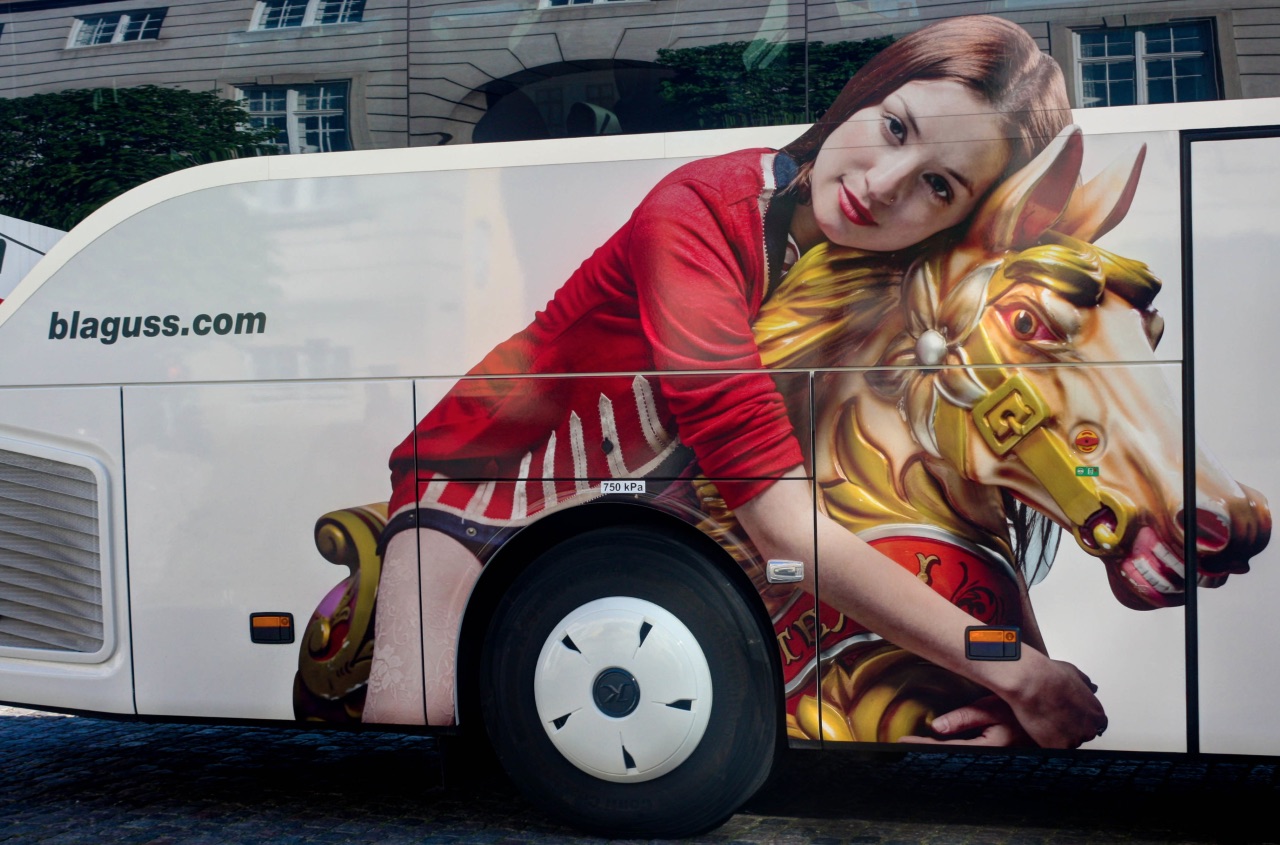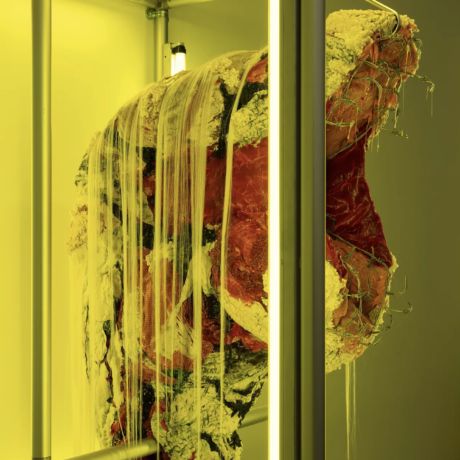
“I’ve been on the front page of the Natwest website, on Skype, and I’m even on the side of a bus in Vienna,” Harriet Middleton Baker is saying, her voice quivering with disbelief. “And the bus was ten years after those pictures were first taken.” Middleton Baker, who now works as an artist, has found it difficult to escape her past as a stock photography model. “I was twenty and in my first year at uni, broke as fuck, when someone approached me for these pictures. I got paid £150 a day, which at the time was loads of money. It was to lark around, to have fun and just hang out. It was so alien from my everyday life.”
You might unknowingly have seen Middleton Baker, who now works as an artist, in one of these images. Certainly, you’ll have cast your eyes over multiple stock photographs already today. You may not register them, but if you log onto social media, read the newspaper or take public transport on a regular basis, you will have encountered them. These staged images pervade our daily lives, punctuating our vision of reality in near-imperceptible ways. If Muzak is background easy-listening, designed to be all-but tuned out, stock photography is its visual equivalent. Both set a mood, and hover somewhere between uniformity and the zeitgeist.
The stock photo industry is booming. The fast pace of the Internet drives demand for easily available imagery, ready at the click of a button, and suitable to any scenario imaginable. Giants like Getty Images must compete with newer players such as Shutterstock and Alamy, each supplying carefully categorized photographs. These are tagged under headings such as “healthy eating”, “back to school”, “festive cheer” or “happy couple”. There are weirder orders, too. How about “angry man eating pizza”, “sad dog watching TV” or even just “dirty dishes”? Type any set of keywords, and it is likely that there will be a corresponding image ready to go.

“You’re very much de-identified when you become a stock imagery person, because you’re yourself and you’re absolutely not yourself,” Middleton Baker reflects. “You only get the images of me if you search things like ‘young’, ‘woman’, ‘London’ and ‘party’. You become a category, a series of categories or a Venn diagram, and you’re just a pinpoint within that.” Stock photography websites become the recycling plant of the Internet, where endless constructed moments go to die and be reborn. Again and again, the same image will appear in the pages of newspapers, on mainstream websites and in billboard advertising.
“I’ve been on the front page of the Natwest website, on Skype, and I’m even on the side of a bus in Vienna”
For writer and editor Claire Marie Healy, just one photo was enough to transform an otherwise forgettable moment into something more significant. “I was doing my mock GCSE maths exam, so I must have been about fifteen. Picture this: it’s the end of the exam, and my headmistress walks in with a man with a camera. They singled me out to have this photo taken with a few other girls in the background. It was a fake image. They gave me a blank piece of paper and just asked that I look like I was still doing the exam,” she says.
What Healy hadn’t anticipated was how the image would circulate. It wasn’t long before the image popped up in the Daily Mail, The Telegraph and countless other newspapers. “Because I look really sad in the photo, it would always be stories about students being stressed from their exams, or girls being depressed as a result of studying,” she laughs, ruefully. “Until recently, if you searched ‘depressed girl in exam’ on Google, this would be the first result.”

The question of consent is an important one when it comes to the circulation of images—and particularly an image of a young person. Healy didn’t understand that this photo would go any further than the local paper, and does not remember signing anything. In the case of Middleton Baker, the story is different. “I was very aware, and I knew what I had done,” she says, firmly. “It’s a transactional thing, and we signed away the rights to our own image.”
Middleton Baker, together with her boyfriend at the time, posed for hundreds of pictures for Getty Images, all with the same photographer. They participated in shoots over several months, including a Christmas-themed one, a party in a set location and another out in the streets of London. The results are slick, high-production and easily cateogorizable. “There’s an image of me waving a Union Jack and wearing a policeman’s hat in front of Parliament, which is quite mortifying,” she says, laughing. “Basically, just smile a lot. I remember my face would hurt at the end of the day. We had to kiss, put our relationship on the market. We were encouraged to be happy, to be joyful; every cliche you could imagine a photographer saying, we had to endure.”
“There’s an image of me waving a Union Jack and wearing a policeman’s hat in front of Parliament, which is quite mortifying”
Stock imagery aims to anticipate trends and desires before they are fully formed, scrambling to ensure that no possible category is left empty. It is rare to type a search term into Getty Images and for it to come back blank. Typical images on the site could be described as remarkably specific and utterly generic, all at the same time. They are both hackneyed and entirely of their time: a snapshot of our contemporary reality, only washed and blowdried to glossy perfection. Middleton Baker remembers the detailed construction behind her images: “The photographer brought props to make us as generic as possible. She’s just trying to create her view of the norm, which is what these images are about, or what the market’s view of normal is. It’s all supply and demand orientated.”

The experience of Louise Shannon, who now works as a curator, was less daunting than Middleton Baker’s. During her time as an Erasmus student in Copenhagen, she posed for a handful of stock photographs taken by the mother of her flatmate, who worked for a national women’s magazine called Femina. “I think she used her daughters quite a lot, and the images would always appear in the health section in the back of the magazine,” she recalls.
“In my case, there’s a hilarious photo of me brushing my hair, and a really embarrassing one of me about to bite into a tomato. Hilarious, but kind of joyful as well. I never felt any kind of sadness, or any sense of me being exploited. We just turned up one weekend at her mum’s photography studio with a few different coloured tops, and I would pretend to brush my teeth.” The images of Shannon repeatedly appeared in Femina following the shoot, always illustrating the health section of the magazine. “I was just an exchange student, aged nineteen or twenty. I never felt out of control or freaked out,” she concludes.
Healy and Middleton Baker are also able to look back on their experiences from the comfort of greater distance, almost ten years on. “It wasn’t extremely upsetting or anything. As time went on, I didn’t look like that anymore, even if the image kept popping up in newspapers,” Healy says. Middleton Baker describes a similar dissociation from her own image: “I really don’t think of it as me at all. It was one day ten years ago. There is something in this contractual transaction: it alters the way you perceive something. It doesn’t upset me precisely because I’m complicit in it. I know that I have actively relinquished control of it, even though I didn’t have the critical faculties to fully understand what I was doing.”

As Middleton Baker points out, she has never owned any of the stock photographs of herself. The same could be said of the many media outlets who have made use of these images over the years. Getty Images and other stock photography websites offer content to be leased for a fee, rather than giving away the full and exclusive rights to an image. It is a relationship symptomatic of our contemporary culture, whereby we are forced to rent when it comes to everything from Netflix to Spotify to Adobe. We find ourselves in a never-ending contract in exchange for stuff. “It’s weird to know that there’s a version of me being rented somewhere, on leasehold. They’re such contrived images; they’re so controlled; they’re so removed from my own personality and experience. I look at them and I don’t see me, but it’s definitely a representation of a version of me.”
“A stock image is just a crystallized version of the Internet and how it operates now”
In her day job, Middleton Baker now works as an image researcher for film companies. “In a way, I’ve come full circle as I’m here using other people’s images. It’s a whole ocean of stuff. Everything’s been reduced to content. Any other narrative about the individual who’s behind that glossy image gets so deeply erased. You see an image of a person, and you see its use rather than the person behind it,” she muses. “It’s symptomatic of this liberal hellhole that we’re in now, where everything is measured by its use. Everything is compounded into its value.”
Healy, too, has come to reflect on her stock image in a new light. She now works as editor of Dazed magazine, and often writes about technology. She realized only later just how far the images had travelled: “As a journalist, you can see how things can circulate without any fact checking, any provenance. A stock image is just a crystallized version of the Internet and how it operates now. My experience is a silly one: it’s just me as a teenager. Stock images generally, well, it’s kind of scary.”

The image-saturated culture of the Internet only continues to accelerate, and it is increasingly common for stock photographs to become the fastest-travelling image of all: the meme. In recent years the Internet has brought us Women Laughing Alone Eating Salad, Awkward Stock Photos and, of course, the Distracted Boyfriend meme. The cheesy, aspirational and downright bizarre qualities of the stock image might become unpicked in the process, but their circulation remains the same.
It is a familiar cycle, and one that we cannot easily dismiss. “We are all complicit in our image marketization, the way we give our images up very easily to a number of corporations, and I think it’s not that different,” Middleton Baker argues. “You put something on Instagram, you’re giving copyright to Mark Zuckerberg at the end of the day.” As Healy puts it, “It does make you think, there’s always a person behind an image.”





